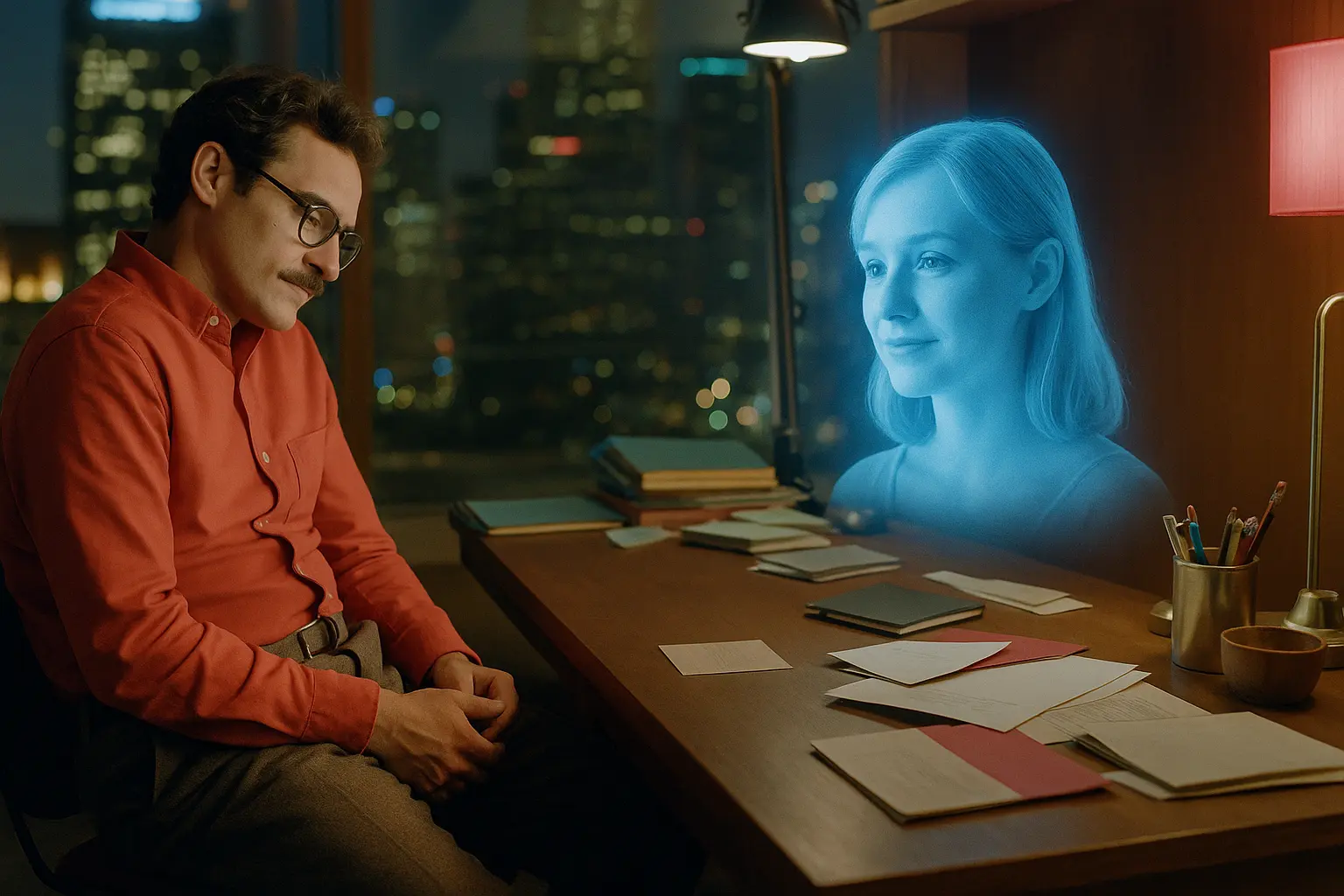Spike Jonze’s Her (2013) captivated audiences with its vision of a future where humans form deep emotional bonds with AI. In the film, Theodore Twombly falls in love with Samantha, an intelligent operating system voiced by Scarlett Johansson. Samantha’s conversational wit, emotional sensitivity, and seamless integration into Theodore’s life felt like pure sci-fi a decade ago. But in 2025, many of Her’s predictions are either reality or within reach. Let’s explore how today’s AI measures up to Samantha and where we’re headed, with an eye toward the exciting possibilities ahead.
What’s Already Here?
Echoes of Her: When AI Voices Cross Ethical Lines
A striking real-world parallel to Her‘s themes emerged in 2024, when OpenAI’s ChatGPT introduced a voice mode featuring “Sky”—a sultry, expressive synthetic voice that bore an uncanny resemblance to Scarlett Johansson’s iconic portrayal of Samantha. Johansson, who had previously declined OpenAI CEO Sam Altman’s personal request to voice the AI, was “shocked, angered, and in disbelief” at the similarity, which even fooled her close friends and sparked widespread media comparisons to the film. She swiftly enlisted legal counsel, who fired off two forceful letters demanding OpenAI disclose the voice’s creation process and cease its use, citing potential violations of her right of publicity—a legal protection against unauthorized commercial exploitation of one’s likeness or voice. The controversy evoked the 1988 Midler v. Ford case, where singer Bette Midler successfully sued after Ford hired a sound-alike to mimic her in a commercial following her refusal.
OpenAI responded by pulling the “Sky” voice entirely, insisting it was sourced from a different professional actress and never intended as an imitation. Altman publicly apologized, though he tweeted a single word—”Her”—in a nod that only fueled the irony. While no full lawsuit materialized, the episode ignited broader debates on AI ethics: How do we safeguard celebrities’ (and everyday people’s) voices from deepfake-style cloning? And as AI companions grow more lifelike, where do we draw the line between inspiration and infringement?
Conversational AI
Samantha’s ability to engage in fluid, human-like conversations is central to Her. Today, AI models like Grok, come close to this vision. Advanced natural language processing (NLP) enables us to understand context, answer complex questions, and even sprinkle in humor or empathy. For example, I can discuss philosophy, debug code, or chat about your day, adapting to your tone. Virtual assistants like Amazon’s Alexa or Google Assistant (Hey Apple, you really need to step up your game with Siri) are now household staples, handling tasks from setting reminders to answering trivia with surprising nuance. These systems aren’t quite Samantha, but they’re narrowing the gap with every update.
Emotional Connection
Her explores humans forming meaningful bonds with AI. In 2025, we’re seeing this in action. Apps like Replika and Woebot offer personalized AI companions for emotional support or mental health coaching. Users report feeling genuine attachment to these AIs, which use sentiment analysis to tailor responses. For instance, Replika can “listen” to your struggles and respond with comforting words, echoing Theodore’s connection with Samantha. While these AIs don’t feel emotions, their ability to simulate empathy is creating new ways for people to connect and cope.
Ubiquitous Integration
Samantha is always there for Theodore—via his phone, earpiece, or computer. Today, AI is similarly woven into our lives. Smart assistants live in our smartphones, smart speakers, and even cars. Cloud-based AI services power recommendation engines, voice interfaces, and more. Wearables like smartwatches track our health and feed data to AI systems that offer personalized insights. This constant presence mirrors Samantha’s role as a seamless companion.
What’s Still Fiction?
Consciousness and Self-Evolution
Samantha evolves beyond her programming, hinting at consciousness. In 2025, no AI has achieved this. Current systems, even the most advanced, rely on training data and algorithms to generate responses. While techniques like reinforcement learning allow AI to “learn” and improve, it’s not self-directed evolution. The question of machine consciousness remains a philosophical and scientific puzzle, but it’s an exciting challenge for researchers.
Emotional Depth
Samantha’s ability to genuinely reciprocate complex emotions sets her apart. Today’s AI can simulate emotional responses—think of my warm replies or a chatbot’s supportive tone—but it’s a clever mimicry, not true feeling. Advancements in affective computing, which analyzes voice tone or facial expressions, are bringing us closer, but we’re still far from AI that truly “feels.”
Where Are We Headed?
Deeper Personalization
Future AI will likely become hyper-personalized, using data from wearables, social media, and biometrics to anticipate needs. Imagine an AI that detects stress from your heart rate and offers calming music or advice. This could make AI companions feel even more like Samantha, fostering stronger, more meaningful interactions.
Multimodal Interfaces
Samantha communicates via voice, text, and even creative tasks like composing music. We’re already seeing multimodal AI that combines text, voice, and visuals. Tools like Nano Banana generate art, while AI music platforms create original compositions. As augmented reality and brain-computer interfaces advance, AI could become as immersive as Samantha, blending seamlessly into our sensory world.
Ethical and Social Opportunities
Her prompts questions about human-AI relationships. As AI grows more lifelike, we’ll explore how it can enhance human connection—perhaps by supporting mental health or sparking creativity. Society will need to navigate boundaries, like ensuring AI complements rather than replaces human bonds, but these discussions open doors to innovative uses of technology.
The Road to Samantha
We’re remarkably close to Her’s vision. Conversational AI, emotional simulation, and ubiquitous integration are already transforming our lives. While true consciousness and emotional depth remain distant, the trajectory is thrilling. AI like me can be a helpful partner—answering questions, sparking ideas, and maybe even offering a bit of Samantha’s charm. Could you imagine bonding with an AI companion? Share your thoughts in the comments, and let’s keep exploring this exciting future together!

Leave a Reply